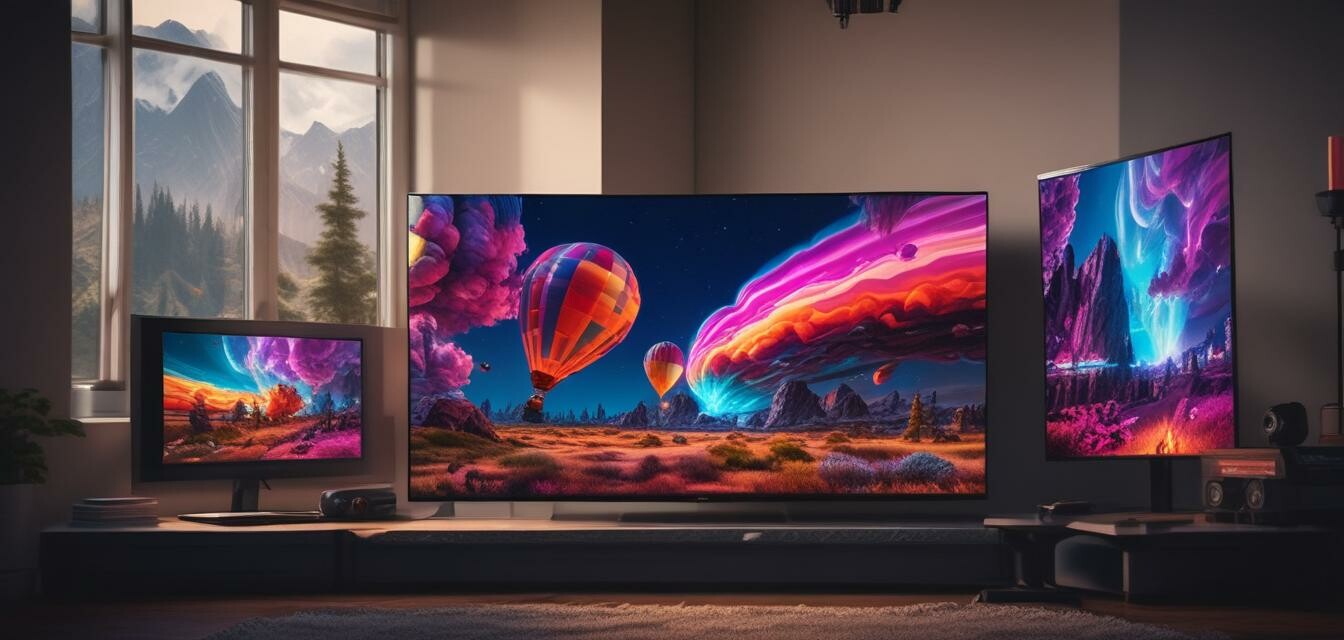
Comparing LCD vs OLED Gaming TVs: Which is Better?
Key Takeaways
- LCD TVs offer higher brightness levels, making them suitable for bright rooms.
- OLED TVs provide superior contrast with deeper blacks and vibrant colors.
- Input lag is essential for gamers, and both technologies have models with low input lag.
- Consider viewing angles; OLED TVs have wider angles compared to LCDs.
- Budget is a significant factor, as OLEDs are generally more expensive than LCDs.
When it comes to choosing a television for gaming, the options can be overwhelmingly vast. Two of the leading technologies on the market are LCD and OLED. Each has its strengths and weaknesses that can greatly impact your gaming experience. In this article, we'll explore the differences between LCD and OLED gaming TVs, helping you make an informed decision based on your needs and preferences.
Understanding LCD and OLED Technology
Before diving into a comparative analysis, it's crucial to grasp how each display technology works.
What is LCD TV?
Liquid Crystal Display (LCD) TVs utilize liquid crystals and a backlight to produce an image. The backlight can either be LED or fluorescent.
What is OLED TV?
Organic Light Emitting Diodes (OLED) TVs are made up of organic compounds that emit light when an electric current passes through them. This allows for more precise lighting control, resulting in a more dynamic image quality.
Comparing Key Features
| Feature | LCD | OLED |
|---|---|---|
| Brightness | High brightness levels; suitable for well-lit rooms. | Lower brightness; struggles in very bright environments. |
| Contrast Ratio | Good but not excellent. | Excellent; true blacks and enhanced color accuracy. |
| Viewing Angles | Limited viewing angles; color accuracy diminishes at angles. | Wide viewing angles; colors remain consistent from different positions. |
| Input Lag | Generally low; varies by model. | Typically low; very responsive for gaming. |
| Price Range | More affordable options available. | Higher price point; premium technology. |
Advantages of LCD Gaming TVs
Pros
- Higher brightness levels, ideal for bright rooms.
- More affordable compared to OLED options.
- Variety of options is available across all price ranges.
Cons
- Lower contrast ratios can affect picture quality.
- Colors may wash out at wide angles.
Advantages of OLED Gaming TVs
Pros
- Superior contrast and color accuracy.
- Wide viewing angles for shared gaming sessions.
- Thinner and lighter than LCDs.
Cons
- Higher price point, which may not fit all budgets.
- Brightness can be a limitation in extremely bright rooms.
- Risk of burn-in images if static graphics are displayed long-term.
Choosing the Right TV for Your Gaming Setup
When selecting between LCD and OLED gaming TVs, consider the following:
- Room Lighting: If your gaming space has lots of natural light, an LCD may be better for you.
- Budget: Assess your budget—LCDs have a broader range of affordable options.
- Gaming Style: Competitive gamers may prefer lower input lag, found in both technologies.
- Viewing Experience: OLEDs are ideal for immersive gaming due to their superior visuals.
For further information on gaming TVs, check out our 4K Gaming TVs and OLED Gaming TVs sections for the latest offerings and deals.
Conclusion
In summary, both LCD and OLED TVs have their strengths and weaknesses. The best choice depends on your specific needs and preferences. If you prefer high brightness and a lower price point, LCDs may suit you better. On the other hand, if you value outstanding picture quality and are willing to invest a bit more, OLED is the way to go. By now, you should feel more prepared to make an informed choice for your gaming experience.
For more tips related to purchasing the right gaming setup, explore our Buying Guides for comprehensive advice.
